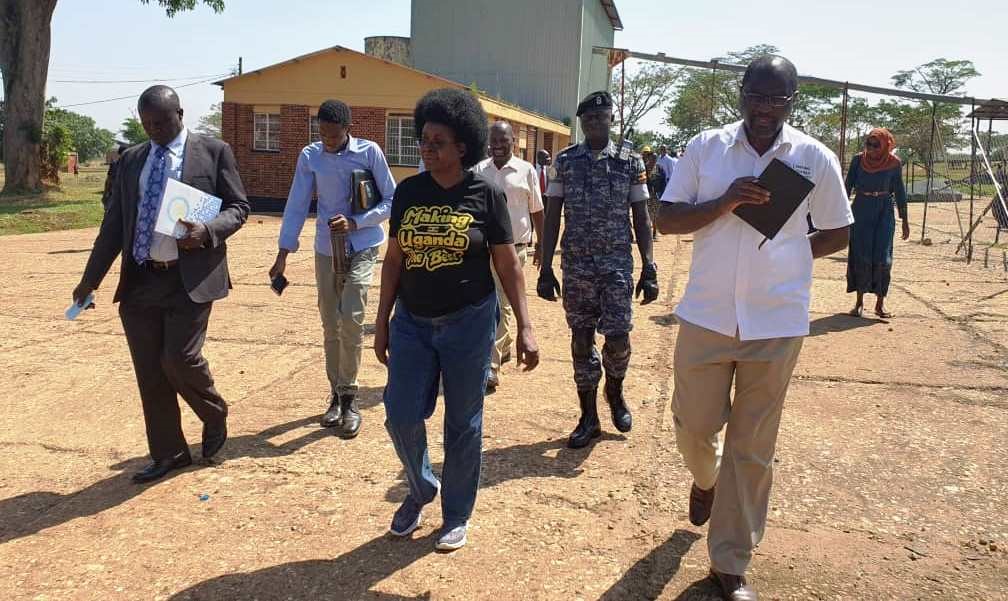On February 11th, 2023, a team led by Hon. Dr. Monica Musenero visited the Cotton Ginnery at Busitema University. The team was received by the Vice Chancellor at 9:56am and had a welcome meeting before starting the tour of the university. During the tour, introductions were made before proceeding to the cotton ginnery.

The cotton ginnery was storing 152 tons of cotton, with each bail weighing 135kg. The team noted that from the cotton that was brought to the ginnery, 36% of the seed cotton was lint, while the rest were seeds. The team observed that there was a manual system to bring the cotton close to the machine to be sucked. The team also observed that the nozzle could be moved to different areas and that there was a rock catcher to prevent heavy materials from proceeding to the processing unit. However, it was noted that some farmers added metals or weight to the cotton, which could break the machine’s fibres.
Regarding moisture issues, the team noted that quality testing is done with a cotton moisture meter, and if the moisture is more than 7%, the cotton will be of poor quality. Farmers dry cotton from their premises and bring it back. The team recommended that the system be converted to address the moisture issue and quality aspect. They also suggested that minor changes and an overhaul of the system should be done to commercialize the ginning system.
The team also toured the factory, where they noted that the distributor gave different ginning machines with different beats. The team asked whether the machines had come from the store and what beats were missing. It was noted that the machines were functional, although there was a challenge of spares. The machines had not been used for five years, and there had been a power surge during the last use.
The team recommended that the machines required servicing. One challenge noted was that the ginning machine breaks the fibres based on its design as a saw machine. The team observed that the machines were brought for demonstration despite the design being made to processes American cotton which posed a challenge hence, and it was rendered a museum piece.
The team suggested that a breeder should make a special machine to process the Ugandan variety of cotton. Additionally, research should be conducted on fabrication to transition the machine. It has was also noted that some of the machines were not operational because during installation, some parts were not delivered. Hence the team recommended that an inventory analysis of the ginning plant be done.

The team observed that some of the machines were working, and they were used for study. However, it was not possible to ascertain whether the machines were in full working condition since they last operated five years ago. The Busitema University head of department recommended that the router bar, which was not functioning, be removed and replaced with eight Bajaj Magnum machines.
The team also observed that some machines like the cuddling machine that cleans the fibres, a lab-scale carding machine that removes short fibres, and a ring frame machine that turns the fibres into thread existed though it is noted that three machines were missing, namely, a combing machine, a speed frame, and an unwarping and sizing machine.
In conclusion, the team noted that the Cotton Ginnery required urgent attention and the machines needed servicing. They recommended that an inventory analysis of the ginning plant be done to identify the missing machines and to ensure that the log of machines that are working is updated. The team also suggested that research be conducted on fabrication to transition the machines, and a breeder should make a special machine to process the Ugandan variety of cotton.


